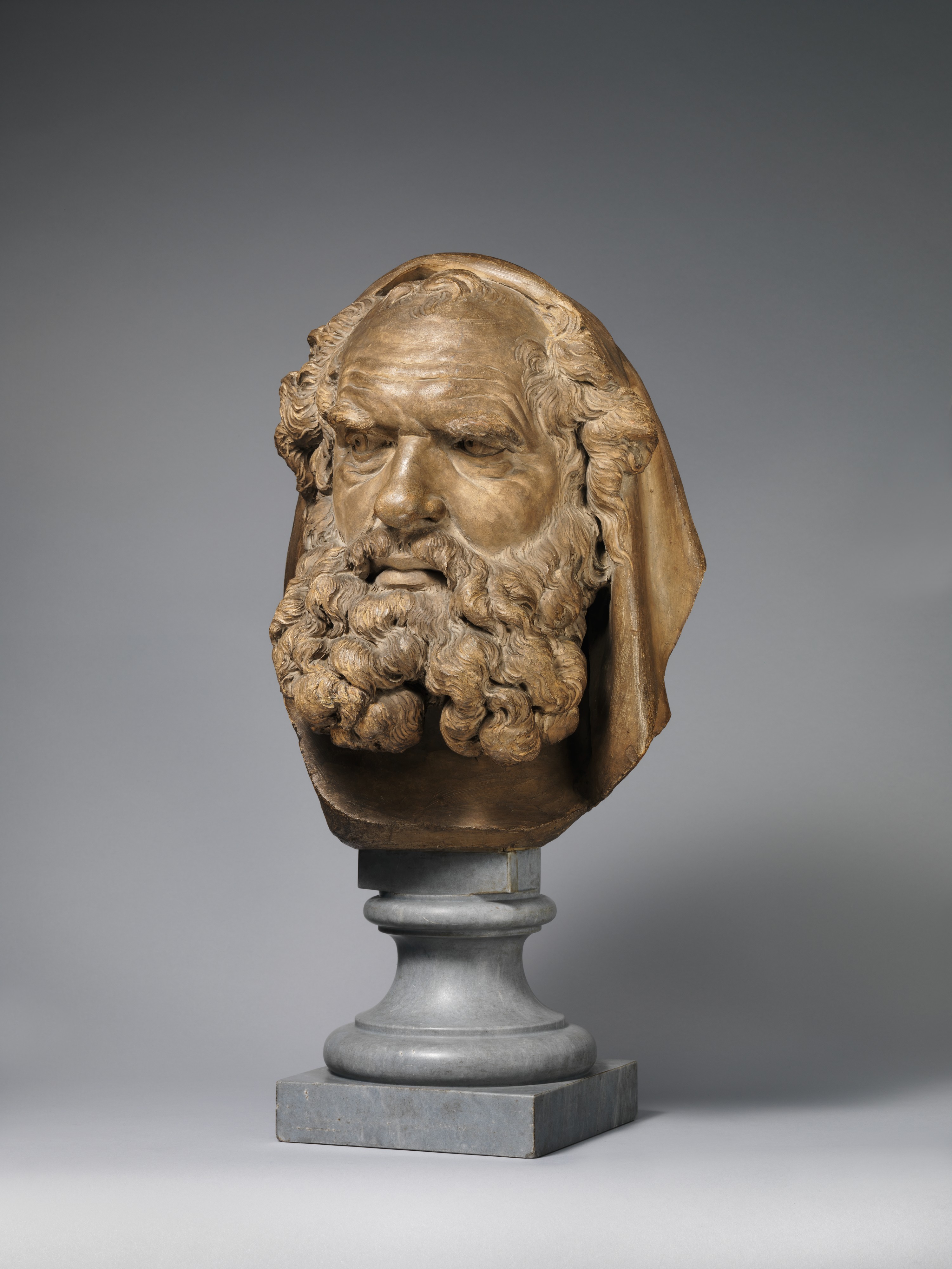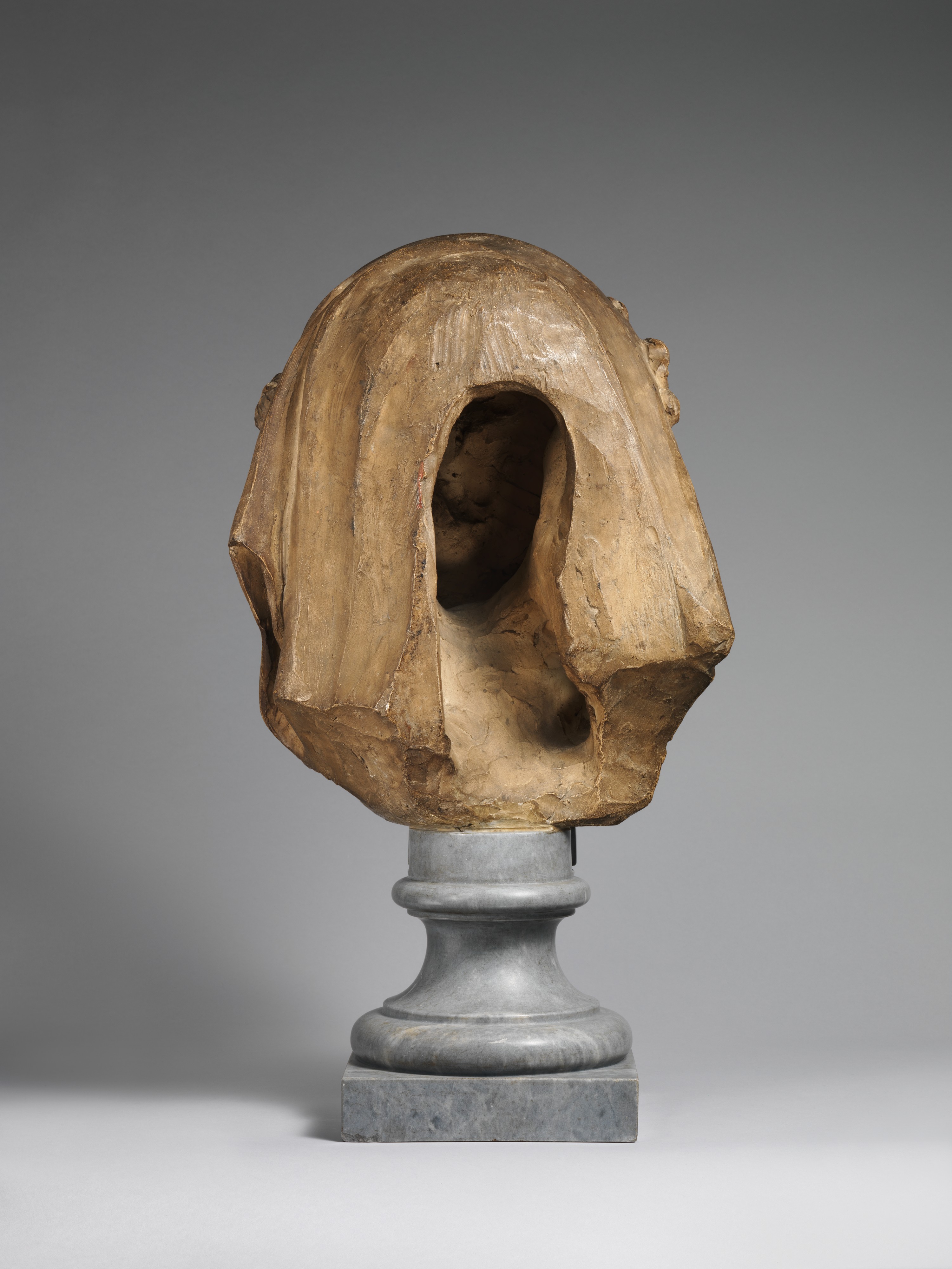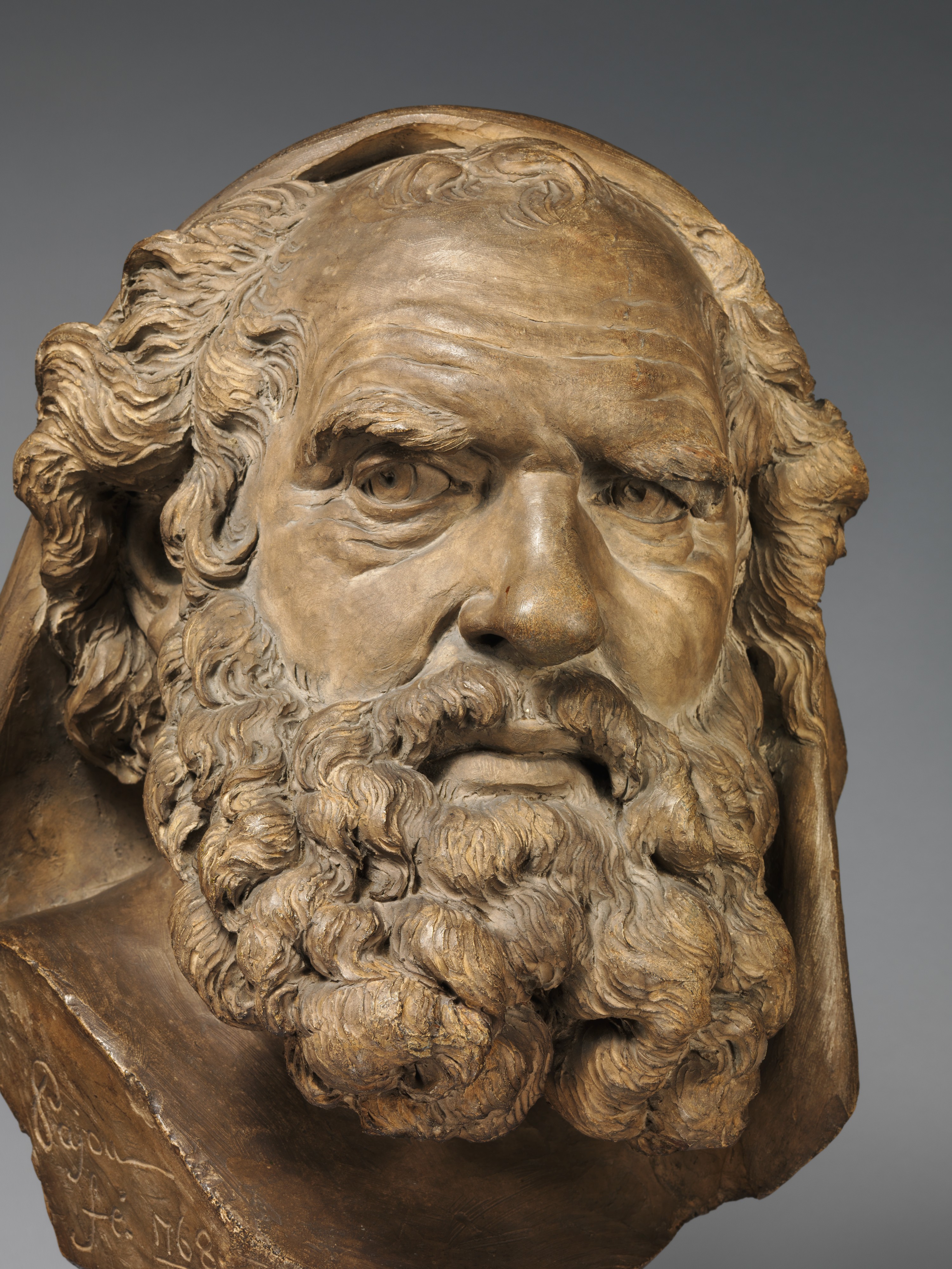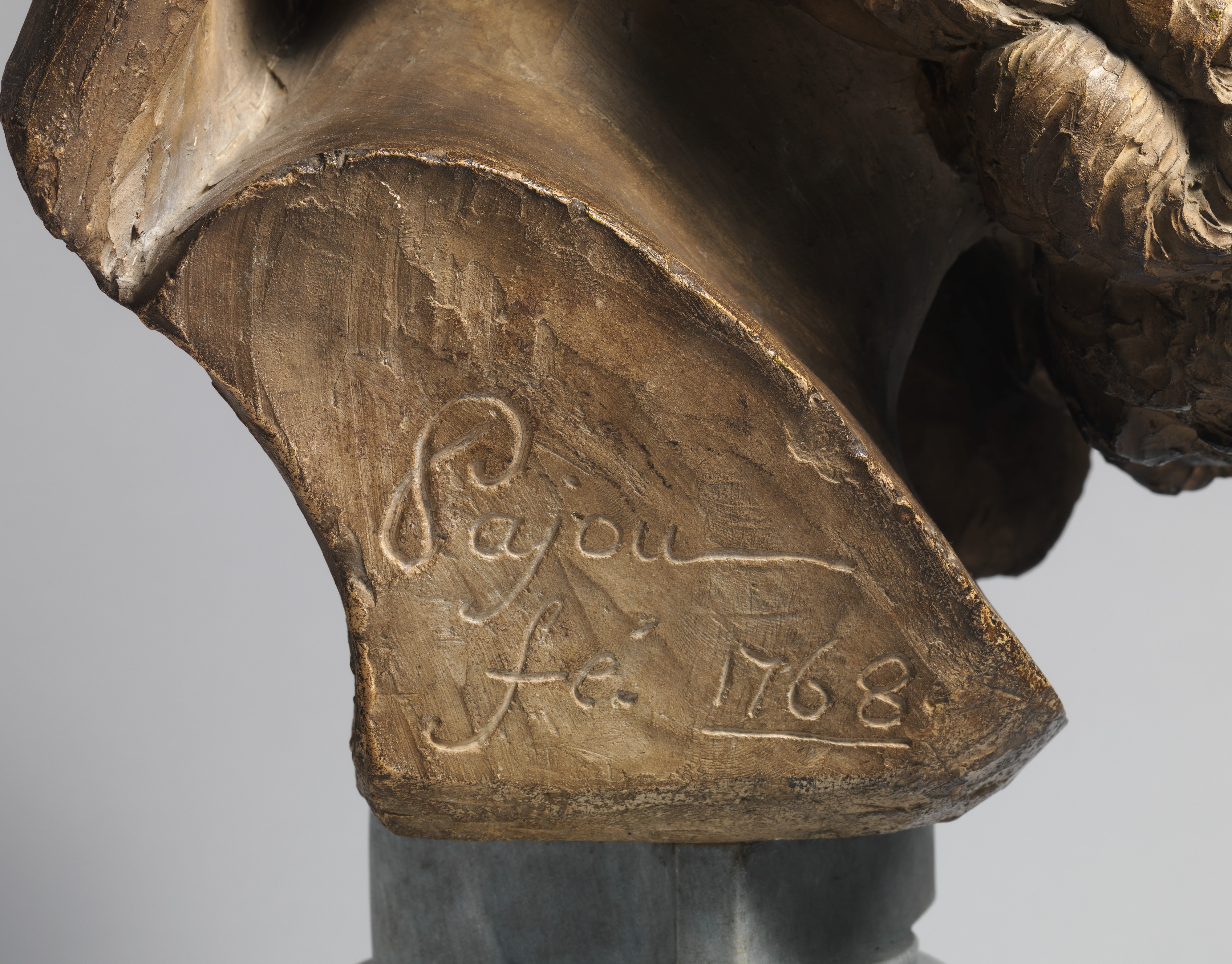Head of a Bearded Elder
Augustin Pajou French
The precise meaning of this bristling elder remains to be determined. Suggestions for his identity have ranged from Aristotle to Moses to a retired pugilist. The work fits within the French academic tradition of modeling heads to express various passions, but which could this belligerent character personify? Barely controlled rage, perhaps, but what does the mantle connote? The ancient marbles that are most like the head in conveying crossness and contempt represent philosophers of the Cynic school, but they do not wear mantles. In the end perhaps the main subject is the model himself, no doubt an Italian; during and after his study years in Italy (1752-56), Pajou drew and modeled similar types, aged but vigorous, hirsute and ornery. Our head, carried out with canny asymmetrical adjust- ments of the clay, is the most mesmeriz- ing of these exercises. Unrecorded until it was auctioned last year in Paris, it was totally unknown to the authors of the Museum's 1998 "Augustin Pajou" exhibition but will figure in next year's "Playing with Fire: European Terracotta Models, 1740 to 1840."
Due to rights restrictions, this image cannot be enlarged, viewed at full screen, or downloaded.
This artwork is meant to be viewed from right to left. Scroll left to view more.







